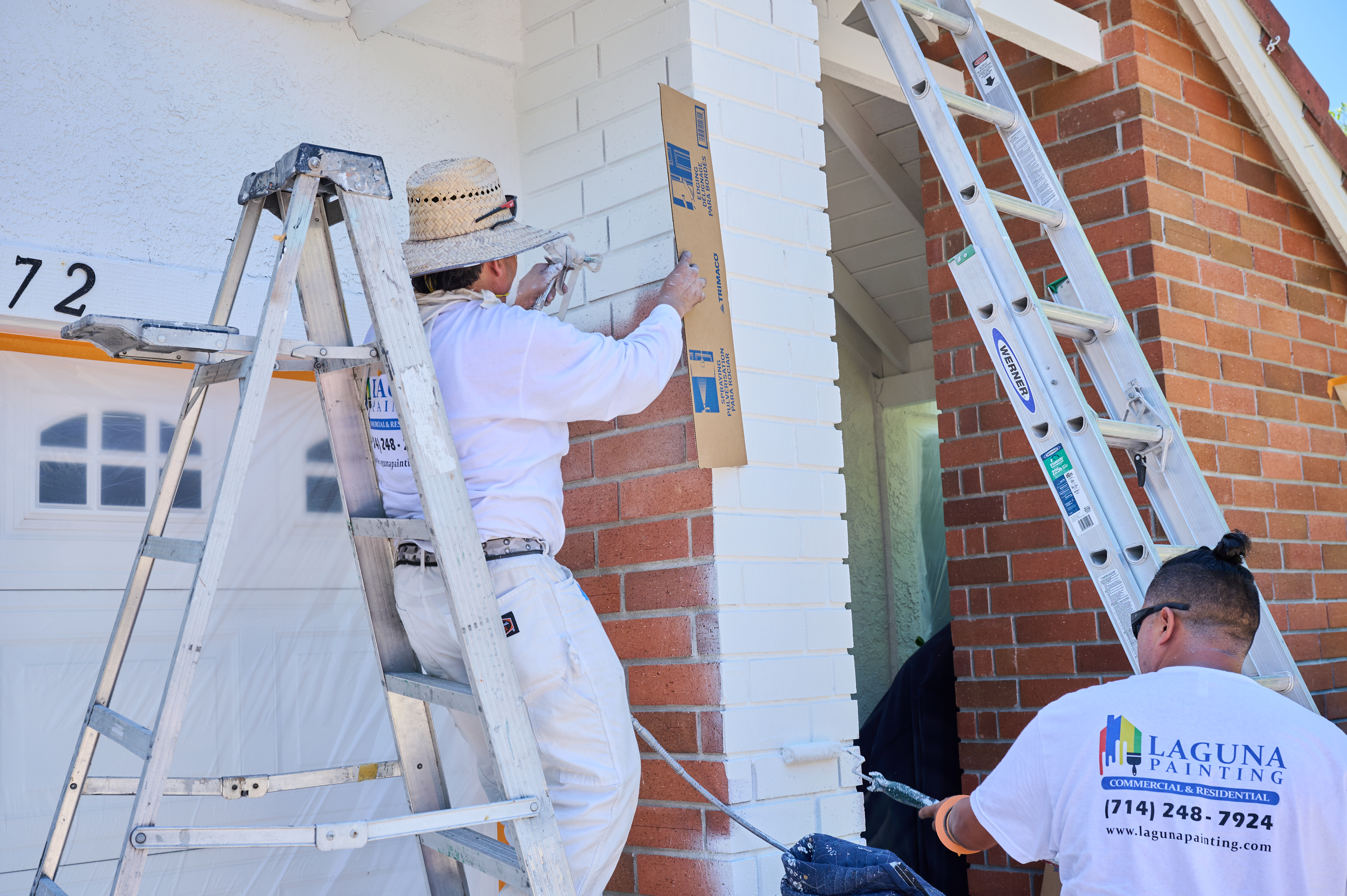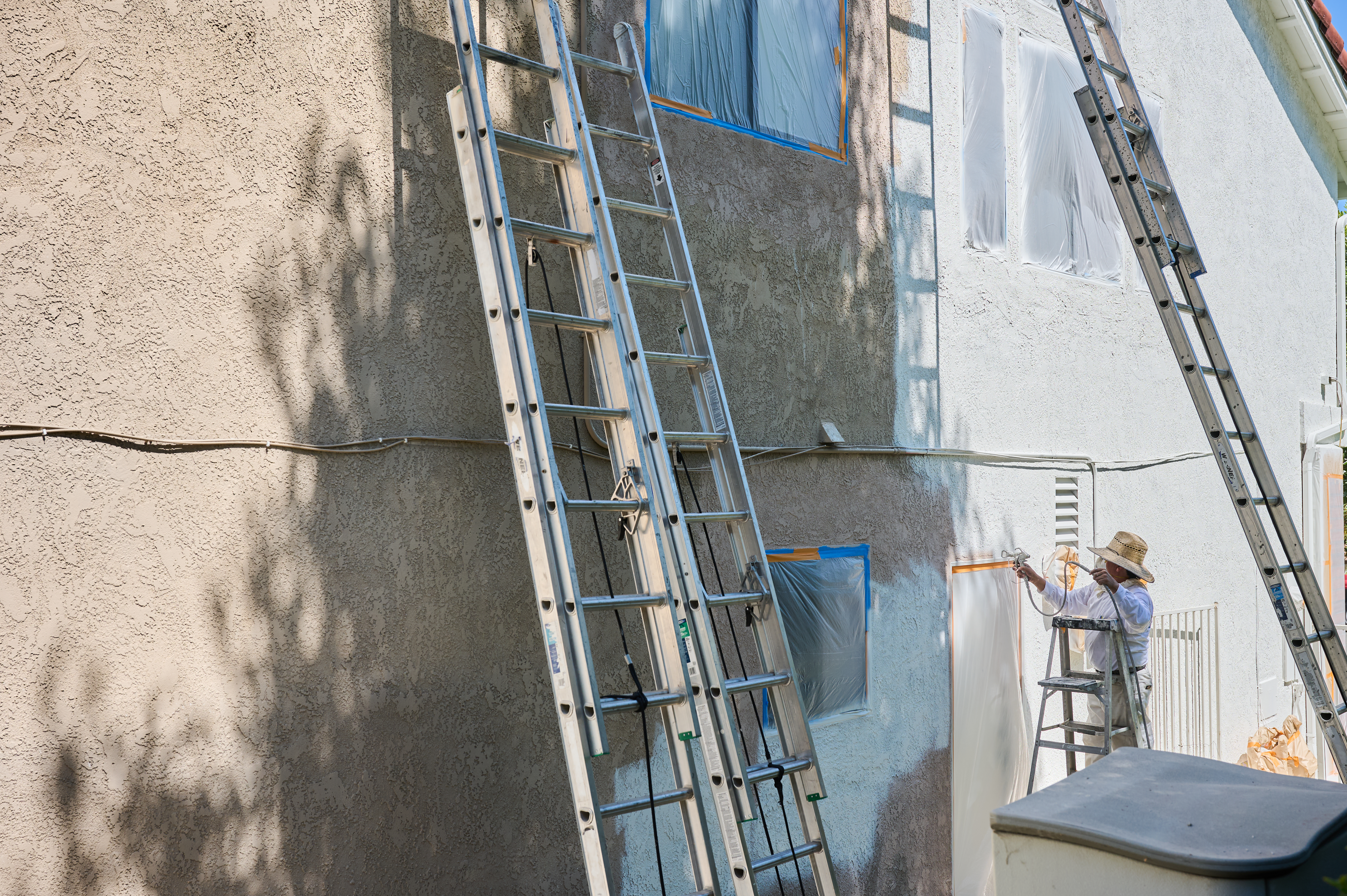
Powder coating can give your furniture, car, and other objects a new look. Learn what powder coating costs by object, size, and other factors with this guide.
Don't get overwhelmed by all those swatches


Knowing how to pick exterior house paint color isn’t as simple as choosing your favorite shade. You may be dead set on yellow, but even then, it can still be daunting to select just one variation from the dozens of yellows to choose from.
Fortunately, there are a number of factors—from the pre-existing elements of your home to what your homeowners' association will allow—that can help you determine what’s right for your particular setup. Here’s everything you need to know about how to pick exterior house paint colors, whether you’re painting your shutters or your siding.
Before getting your heart set on a particular hue, find out which colors are fair game in your homeowners’ association. That way, you won’t fall in love with a shade you can’t actually use. Some HOAs permit just about any paint color, while others are stricter about adhering to a certain scheme and might even dictate the trim, roof, windowpane, and soffit and fascia paint colors.

Take a long, hard look at the outside of your home before beginning an exterior painting project. Take note of what’s already there, what can and can’t be changed, and how much you’re willing to alter.
Start by considering how your home was built. While it’s not impossible to paint a brick house, for example, they don’t typically need a coat of paint to look great. In those cases, you may want to turn your attention to the other components of your home’s exterior, like the window trim, doorways, and roof. Try to choose a color palette that highlights or complements the natural shade of brick or stone you’re working with for the best results, like navy siding with a red brick house or a slate gray paint color for a front door on a dark wood home.
On the other hand, wood homes generally need a fresh coat of paint every seven to 10 years. Of course, painting the body of a home is a lot more work than just touching up a doorway. And taking care of everything at once can be quite the project, especially if you’re picking brand-new colors for each element. Instead, try choosing one new shade for the majority of your home that pairs well with the other pre-existing colors to cut down on things like the cost to paint a garage door or roof. Then, simply refresh the older colors with any leftover paint cans that you still have from last time.
When choosing an exterior house paint color, it’s important to consider every aspect of your home—including its architectural style. After all, some home styles just look better in certain colors.
For example, the best exterior paint colors for a colonial home are going to differ from the best options for a mid-century modern abode. While a light blue facade may be charming on the former, it’s more likely to look out of place on a house built in a completely different style.
When in doubt, do a bit of research to find out which colors are most commonly used in your home type. While it’s not unheard of to choose an out-of-the-ordinary option and have it work, having some visual references will help you pick a color you’ll enjoy for years.
Looking for inspiration online is a great start, but nothing compares to seeing what a house color looks like in real life. Where’s a good place to see such colors in action? In your neighborhood, of course! Perusing your neighbors' abodes will both give you ideas for your own and a chance to see colors outside of a computer screen or magazine.
That way, you can see if that blue you’ve been dreaming of is really all it’s cracked up to be or rather hiding its faults behind a flattering filter. What’s more, roaming your community for inspiration will also give you a peek into what your HOA does and doesn’t allow so you can plan accordingly.
If you are up to the task of changing your home’s entire color palette—from the garage door to your deck colors—don’t limit yourself to just one color. Even the brightest yellows can fall flat if they aren’t paired with the right counterparts.
Stick with three colors as a general rule to avoid overdoing it, and don’t be afraid to try something that you never normally would. Sometimes the best pairings look far better together than they ever did apart.
Whether you’re trying to choose a shade for your siding or looking for barndominium paint colors that stand out, a little thing called color theory can really help. Color theory explains the dos and don’ts of pairing different hues, including how to navigate a color wheel and pick a palette that melds rather than conflicts.
Both light and dark exterior paint colors have the capacity to reduce your energy bill, but where you live has a big impact on which option is right for you.
Light colors are great for warm climates because they reflect the sun and keep home interiors cool. On the other hand, dark colors do a better job of absorbing and retaining heat, which makes them particularly well-suited to colder regions. That’s why you’ll often see tan and white houses in the desert and darker homes in icy settings.

While we’re on the subject of weather, let’s talk about how it can affect the appearance of your home. Everything from stormy afternoons to the sunniest high noon can have an impact on the way your exterior paint color looks.
For example, brightly colored homes are popular in cloudy destinations because they pop even more against a gray backdrop. But in a sunny place where there are already plenty of bright colors, they may appear more gaudy than welcoming.
Choosing a trendy color might feel right at the moment, but just like fashion trends—think perms, bell-bottom jeans, and frosted tips—home design trends come and go. A color that’s in right now might look appealing through today’s lens, but when you go to sell your home in 10 to 20 years, it could be a color that is no longer desirable—or that we even laugh about and say, “I can’t believe that was ever a thing!” (Looking at you, frosted tips.)
Instead, focus on a color that makes you happy. If you and your family love it (and it conforms to all the rules of your city, historical zone, or HOA), then that’s all that matters. You can always paint it to what is on trend right before you sell.
Once you have an idea of the colors you’re going to use, it’s time to start testing your options. Head to the hardware store and pick up a few sample paint cans or swabs of the shades you’re considering. Then, apply them to a part of your home that’s not visible from the front (just in case they aren’t what you were expecting). From there, you’re all set to start preparing your home’s exterior for a brand-new coat of paint, and if you’d rather not do it yourself, hire an exterior painter near you.
Speaking of hiring a painter, it’s worth asking for a professional’s input before choosing a color. If you already know which painter you’ll be hiring, ask them if they have paint color recommendations for the type of home you have or the area you live in. And if you’re getting ready to sell your house, the real estate agent you plan to use may also have important input.
Painting a front door or touching up faded or chipped paint is certainly doable as a DIY project, but painting your home’s entire exterior is a job best left to a professional. The work is tedious, time-consuming, and dangerous if scaffolding or ladders are required.
The cost savings of painting a house exterior on your own are likely not worth the work you’ll endure—not to mention you’ll need to buy or rent a lot of expensive equipment to get the job done. On average, the cost to paint the exterior of your house when hiring a pro is $3,150; painting it on your own could still cost upwards of $1,000, and that’s without calculating the cost of your time.
From average costs to expert advice, get all the answers you need to get your job done.

Powder coating can give your furniture, car, and other objects a new look. Learn what powder coating costs by object, size, and other factors with this guide.

The cost to paint a house's exterior depends on its size, siding type, and height. The finish and the home's exterior condition also play a role.

Painting a brick house typically costs between $1.40 and $4.20 per square foot. Your total cost will depend on where you live and the finish you use.

When you hire a painter, you need to understand what goes into painting contracts to ensure your project will go off without a hitch.

Discover the perfect shutter colors to complement your gray house, elevate its curb appeal, and enhance the beauty and character of your home.

Can you paint Trex decking? Learn whether there are any cases in which paint is safe to use on a Trex deck.